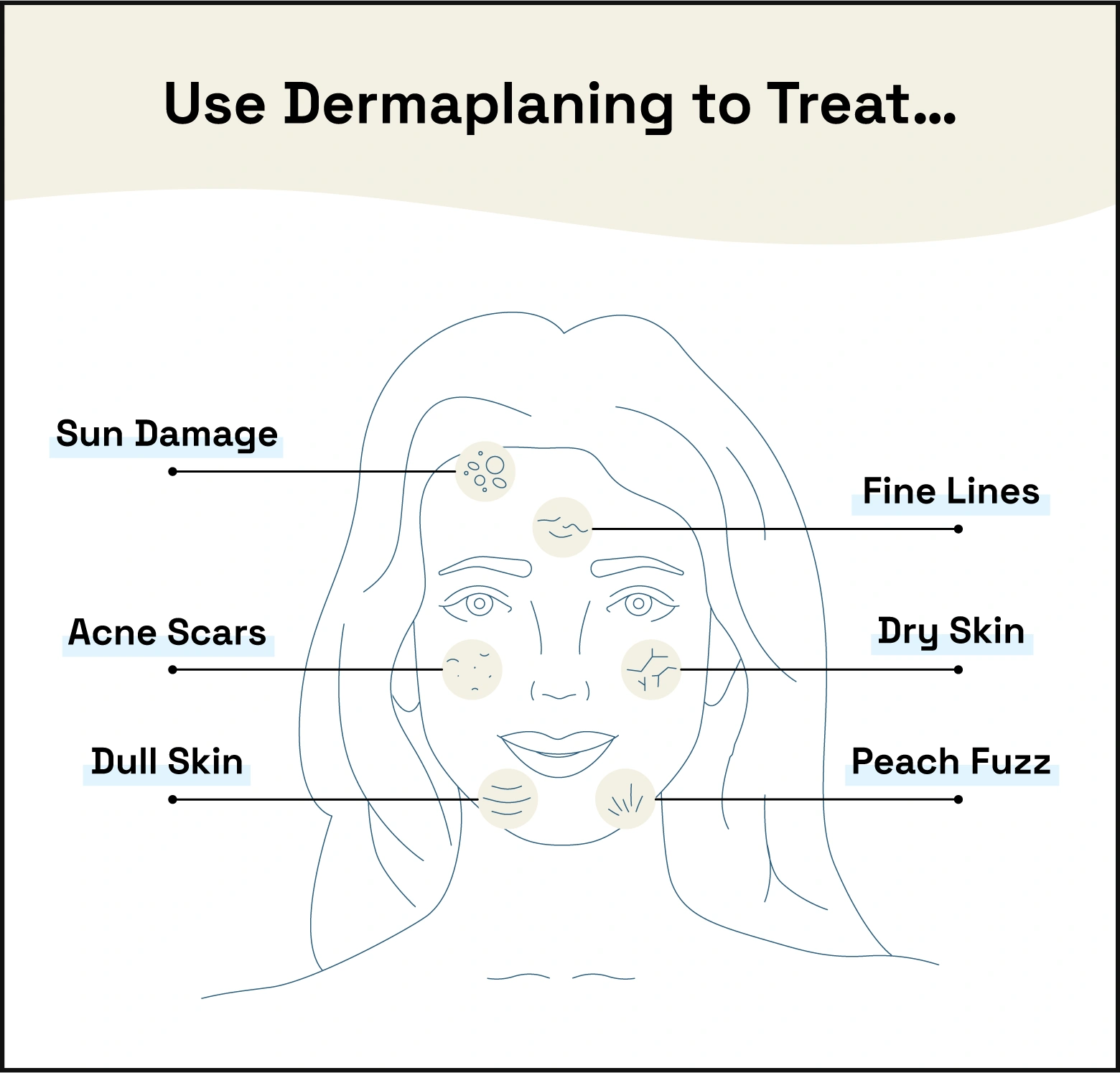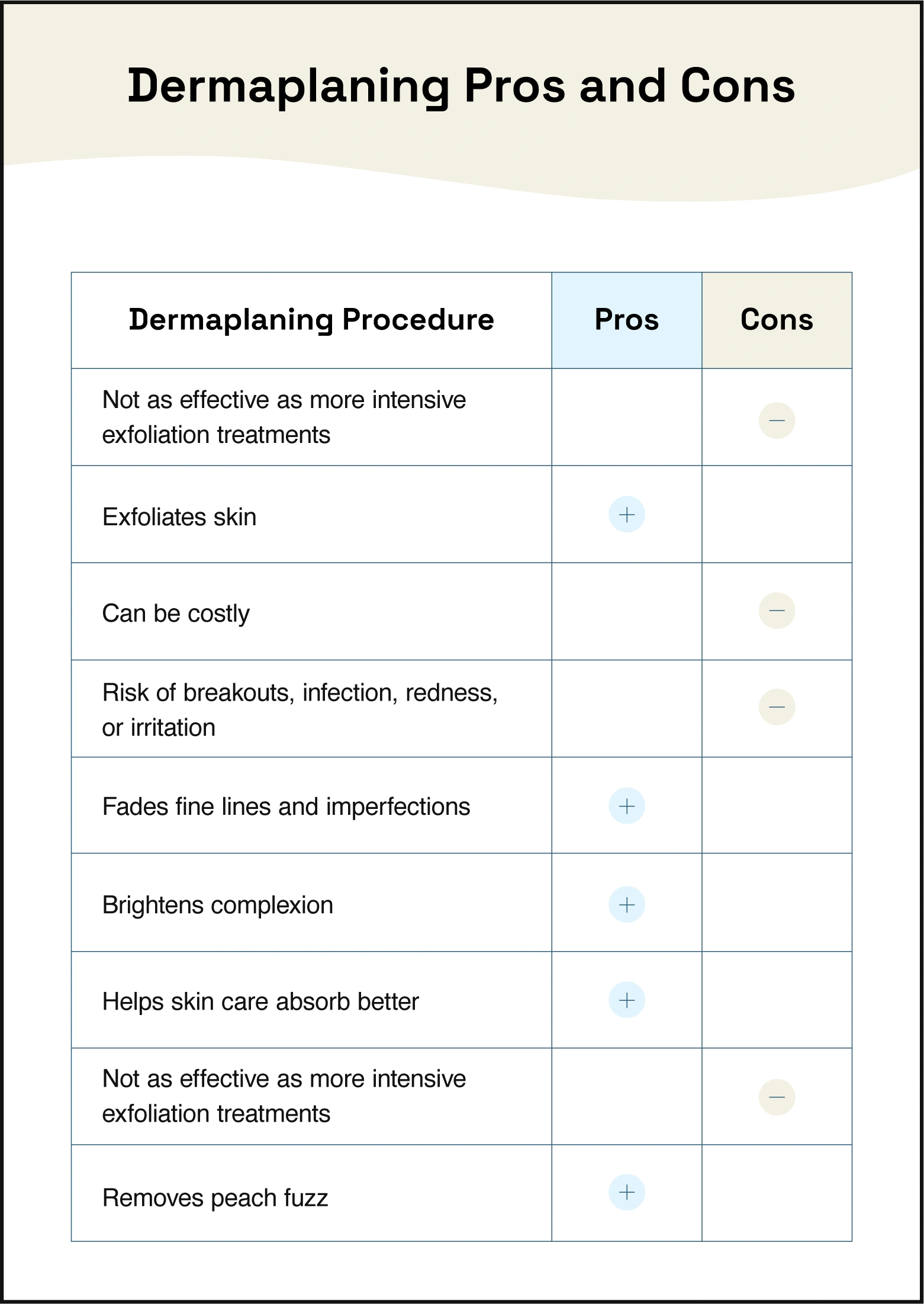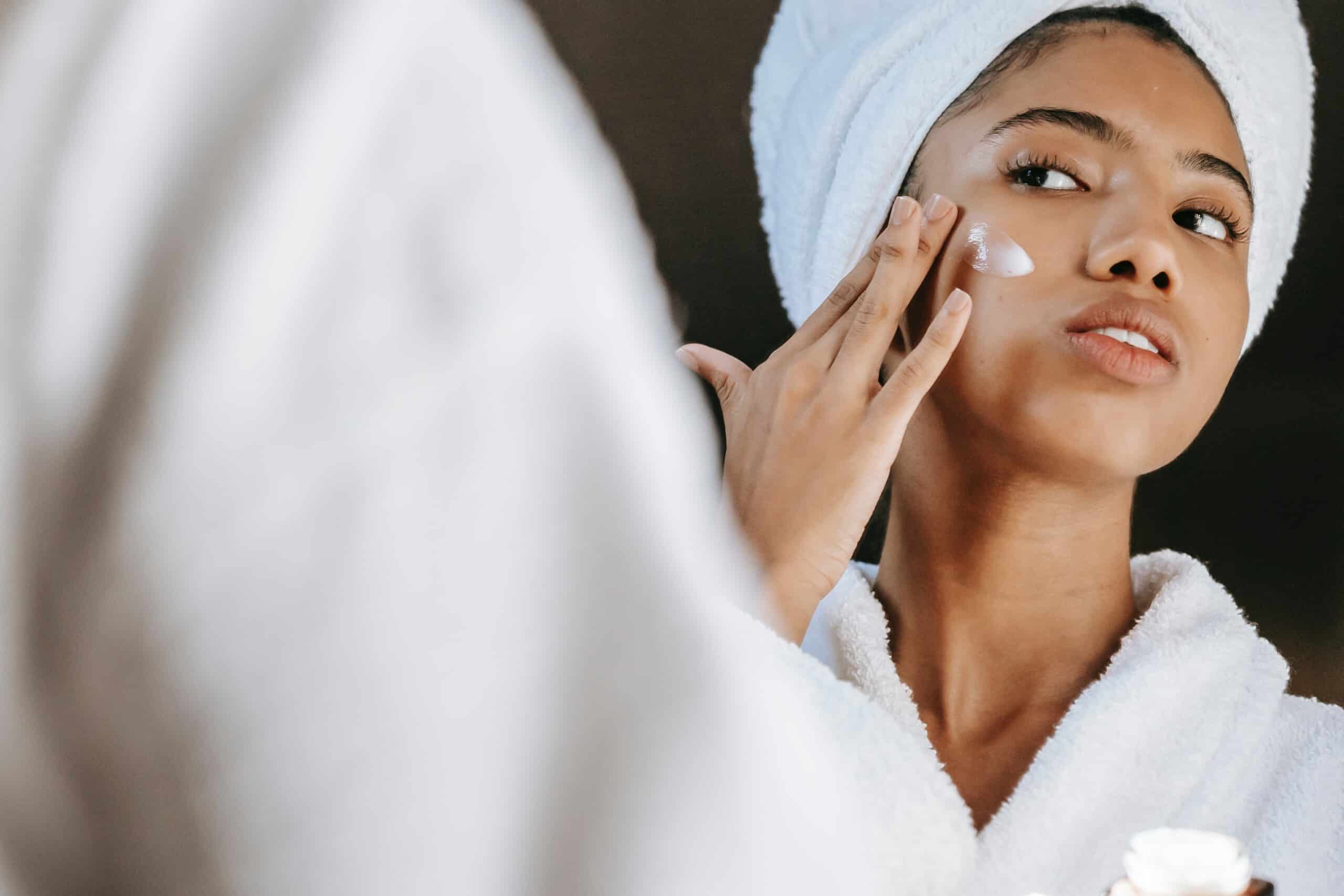What Is Dermaplaning? How It Works, Benefits, and Risks

Delicious peaches might conjure up memories of decadent cobbler and warm summer days — or they may just remind you of the fine fuzz gracing your cheeks and upper lip. That’s where dermaplaning comes in handy.
From benefits to side effects, here’s all you need to know about this latest facial trend.
What is dermaplaning?
Dermaplaning is a physical exfoliation treatment performed using a scalpel to gently scrape away dead skin cells and hair to reveal bright, beautiful skin. This professional cosmetic treatment — which is also referred to as microplaning or blading — is quick, painless, and requires virtually zero downtime.

Almost anyone looking for youthful, radiant skin can benefit from dermaplaning. This procedure is most often used to treat:
- Acne scars
- Peach fuzz
- Dull skin
- Dry skin
- Sun-damaged skin
- Fine lines and wrinkles
While many beauty influencers across social media rave about dermaplaning as the new DIY “it” treatment for smooth, flawless skin, it’s best to leave this practice to the professionals. Performing this treatment without the proper tools and experience may result in cuts, scarring, irritation, or infection.
Schedule an appointment with a licensed esthetician to ensure your dermaplaning experience is as safe — and effective — as possible.
Is dermaplaning just shaving?
Not quite. While dermaplaning and shaving both work to remove peach fuzz, dermaplaning has the added benefits of exfoliating and brightening the skin.
Instead of using a straight razor or multi-blade razor to shave the face, a skin care professional will opt for a scalpel blade or dermatome to remove the top layer of skin (the epidermis) when dermaplaning. Removing the epidermis is a bit more invasive than simply shaving, and is often done in combination with a moisturizing facial to help the skin recover faster.
In other words, dermaplaning will remove your peach fuzz and exfoliate and smooth your skin, while shaving only removes facial hair.
How does dermaplaning work?
Environmental toxins, irritants, and UV exposure wreak daily havoc on our skin, causing it to appear dull and aged. Dermaplaning removes those damaged cells to expose newer, healthier-looking skin. Using a sterile surgical scalpel or dermatome — a device that uses an oscillating blade to evenly skim off the superficial layers of your skin — a licensed professional will gently remove the top layer of skin, including dead skin cells and peach fuzz.
While taking a blade to your face may sound daunting, this procedure shouldn’t hurt beyond a subtle stinging sensation. Some dermatologists may apply a numbing cream or local anesthesia to the area, but it isn’t necessary. A dermaplaning session can last anywhere from a few minutes to an hour, depending on the size of the treated area. Treatment is usually followed by a soothing moisturizing cream or facial to calm irritation and redness.
By using physical exfoliation to trigger the cell regeneration process, dermaplaning can improve the appearance of stubborn acne scars, fine lines and wrinkles, and sun-damaged skin.
What’s the difference between dermaplaning, microdermabrasion, and dermabrasion?
Dermaplaning, microdermabrasion, and dermabrasion are all exfoliating procedures used to promote cell regeneration. However, the intensity and tools used for each of these professional treatments vary greatly.
Dermaplaning vs. microdermabrasion
Dermaplaning and microdermabrasion are both noninvasive physical exfoliating procedures used to treat fine lines and dull skin. However, dermaplaning uses a scalpel or dermatome to scrape off dead skin cells and fine hairs, while microdermabrasion uses a small electric device to exfoliate and suck debris from your skin, leaving the peach fuzz.
Both procedures reveal a new, glowing layer of skin, but dermaplaning may benefit you more if you have dry, aging, or scarred skin. On the other hand, microdermabrasion may be the best treatment for you if you’re looking to treat dark spots, clogged pores, or hyperpigmentation.
Dermaplaning vs. dermabrasion
Dermaplaning and dermabrasion are both physical exfoliating treatments, but the similarities stop there. Dermabrasion is an intensive surgical procedure that involves a rapidly rotating blade to “sand” away the outer layer of skin. A dermatologist may use extensive dermabrasion to address serious skin concerns, and the recovery time can take months versus less than a day for dermaplaning.
If you want to fix deep acne scars, melasma, pox marks, stretch marks, or even fade tattoos, dermabrasion may result in a more dramatic outcome at the cost of more healing time.
Dermaplaning pros and cons
The benefits of dermaplaning go beyond brighter, smoother skin. Removing dead skin and hair can prevent breakouts, help with skin care product permeation, and make your foundation look more lustrous than ever.
It can even aid in the healing of other skin care procedures, according to Dr. Enniza P. Factor, clinical dermatologist at MyVitiligoTeam. “Dermaplaning is great after procedures like chemical peels that make your skin dry and flaky. Your dermatologist may suggest coming back in and getting dermaplaning for maintenance, just to take off that dead skin and speed up the healing process.”
However, there are a few risks associated with dermaplaning, such as breakouts and irritation. For people experiencing severe skin issues, dermaplaning may actually cause more harm than good. Before you schedule your first appointment, make sure you talk with your dermatologist about the pros and cons of dermaplaning.

| Pros | Cons |
|---|---|
| ● Exfoliates skin ● Fades fine lines and imperfections ● Brightens complexion ● Removes peach fuzz ● Helps skin care absorb better | ● Risk of breakouts, infection, redness, or irritation ● Can be costly ● Not as effective as more intensive exfoliation treatments ● Not suitable for people with severe sunburn, active breakouts, or sensitive skin |
Dermaplaning FAQS
Dermaplaning performed by a licensed skin care professional is a safe, minimally invasive exfoliation procedure. While you may experience a slight stinging or scraping sensation, dermaplaning is largely painless.
However, there are more serious risks associated with at-home dermaplaning. Without the proper tools and experience, DIY dermaplaning is more likely to result in breakouts, infection, irritation, dryness, and minor cuts.
The results of a dermaplaning session typically last for three to four weeks after treatment, although you may need more frequent visits at the beginning of your routine. Ask your esthetician to determine the best dermaplaning schedule for your skin goals.
Although dermaplaning is a low-risk procedure, there are a few rare side effects to consider. Besides slight redness and swelling after the procedure, it’s possible to experience the following:
● Scabbing over the treated area
● Skin discoloration
● Scarring such as keloid or hypertrophic scars
● Infection
People with active skin conditions like acne, eczema, and sunburn should wait until their skin is completely healed before scheduling a dermaplaning treatment. Additionally, dermaplaning may not be the best option for people with sensitive skin, and those undergoing cancer treatment or who have taken Accutane or tretinoin within the past six months should avoid this procedure completely.
If you’re unsure whether dermaplaning is the right solution for your skin needs, talk to a licensed esthetician to discuss your options.
Schedule your first dermaplaning facial for professional results
Dermaplaning is more than just a hot new skincare trend — when performed by a professional, this minimally invasive treatment can have incredible results for those struggling with dull skin or minor skin imperfections.
Now that you know the benefits and risks of dermaplaning, it’s time to book a skin care consultation with the right beauty professionals in your area. StyleSeat can easily and quickly connect you to an experienced esthetician to help make your skincare goals a reality.


